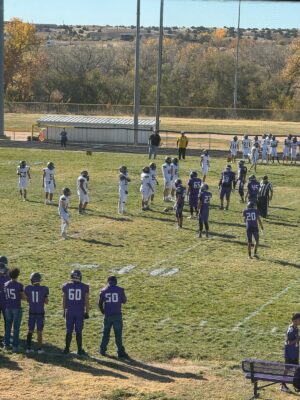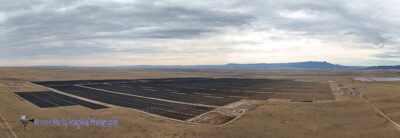Special to KRTN…San Isabel Electric’s post-Spring Fire rebuild of electric infrastructure in Forbes Park is now 90% complete.
The 2018 Spring Fire was the third largest wildfire in Colorado’s history, destroying 108,045 acres. In the Forbes Park and Wagon Creek area alone, 7,500 acres and 404 lots were affected by the Spring Fire, according to Huerfano County emergency management.
There have been some challenges in the rebuilding the backbone of the community, the electric infrastructure. Construction season is short for Forbes Park due to the elevation and the snow fall. Forbes Park is in a rural area and is about an hour drive from San Isabel Electric’s nearest service center in Walsenburg. Although there have been challenges, the electric cooperative has been working diligently for last two years to make power available when members need it.
About, 6.6 miles, or 35,000 feet of primary power line that feeds the Forbes Park area has been replaced, along with numerous pieces of pad-mount transformers and other safety equipment. More than 70 distribution lines have been replaced, and 20 new distribution lines have been installed.
Rebuilding the primary lines and distribution lines that go directly to members’ homes, will continue, as members request new service.
Expanded wildfire mitigation protocols
Since the Spring Fire, SIEA has expanded its wildfire mitigation protocols.
The cooperative is identifying areas with high fire risk in its 9,600 square miles of Colorado service area and using programmable devices to reduce fire risk and improve the grid’s resiliency.
High-fire risk areas are identified by considering the history of wildfires in the area, vegetation and potential fuel sources, types of electric infrastructure, as well as other environmental factors.
When stage 2 fire restrictions, prohibiting all open burning of any kind, are issued in areas identified as high fire risk areas, the co-op will modify operations of automatic switches, and reclosers.
Typically, when something makes contact with a power line, such as vegetation or an animal, there is an increase in in electric current. The force of the electric current can often hold the item on the line, which can create arcs and sparks. When the smart switches and reclosers sense the increased current they immediately open for a few seconds, and then close again – breaking the flow of electricity, which can allow the item to fall off the line. If the increase in current is still present, the equipment opens and closes again and again, three or four times. When members experiencing their power blinking on and off, this is often the cause – reclosers or switches, designed to protect the system are functioning correctly. The opening and closing either causes the item to fall off the line, and power remains on, or a fuse is blown, causing a power outage to protect the affected area of the electric infrastructure.
During stage 2 fire restrictions, SIEA will be changing the system operations to immediately blow a fuse before a recloser operates to prevent reclosing into any situation that could potentially start a fire. Reducing the possibility of electricity holding something on the line and catching fire or sparking a fire.
The consequences of wildfires are not taken lightly by San Isabel Electric employees. From the employees behind a desk, to those in the field, our members are the most important part of the cooperative, and they always will be.
As a not-for-profit cooperative utility, San Isabel Electric provides affordable, reliable electricity to communities throughout southern Colorado. Serving nearly 20,000 member-owners and 24,000 meters, San Isabel Electric has been keeping the lights on since 1938. We don’t just serve communities. We are part of communities.
SIEA currently has 1,537 fuses and reclosers, in areas with high fire risk profiles that provide immediate notification of system disturbances, allowing crews to be dispatched quickly.
SIEA has replaced thousands of poles in the last three years as part of the cooperatives planned upgrade projects.
The co-op has also re-evaluated its tree trimming cycle, to trim every three years in areas where there is rapid growth and eight years in slower growth areas. Two additional full-time employees and a contract crew were hired to help address the new trimming schedule.
SIEA meets or exceeds state vegetation and fire safety standards. This includes overhanging limbs and branches above and around power lines.
.





